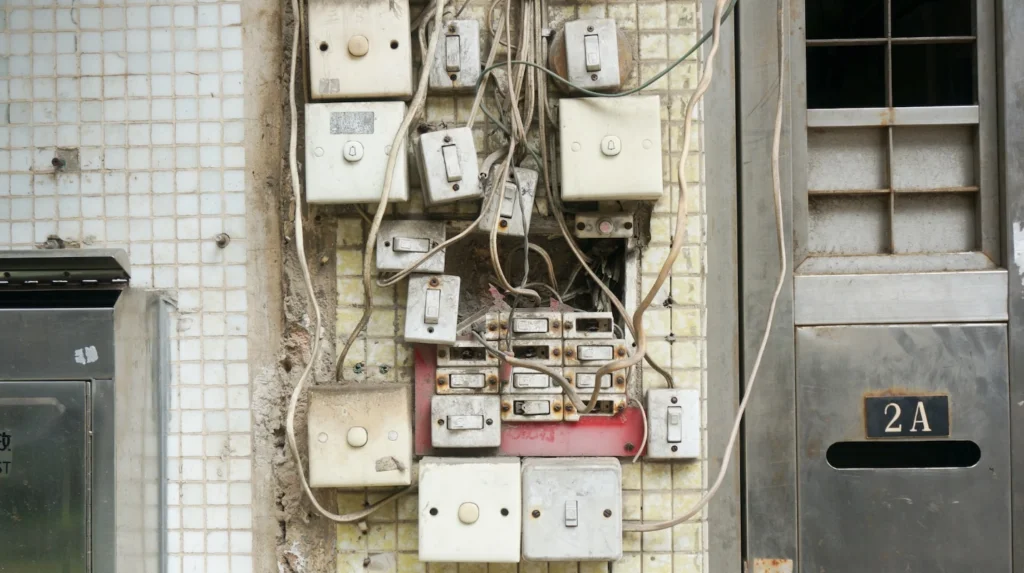
To protect your home, you need to be familiar with potential threats first. As such, let’s go over how to spot potential fire hazards in your home!
Identify high risk areas
The first thing you need to do when trying to spot potential fire hazards in your home is to identify the high risk areas on your property. For example, the boiler room, if you have one, the kitchen, your old shed with tons of easily flammable items in it, potentially including oil, gas, and other such substances, perhaps your attic or basement, if they serve as storage areas. By knowing where the risks lie, you can more easily work on fire and explosion prevention. Of course, you should not forget the rest of your home and just focus on these, but it’s a start!
Keep an eye on your cables and outlets
Cables, outlets, and particularly extension cords can become extreme fire hazards. This is why, if you want to keep your home safe, you need to spot these potential fire hazards in your home early. If there’s any sign of blackened spots or slightly melted plastic on any of these, replace them immediately. The same applies if your outlets are slightly loose or even seem like they’ll fall out of the wall at any minute. A good example of a hidden fire hazard are cables left under carpets or similar. People walk over the carpet, and friction causes the protective layers of plastic and insulation on the cables to rub away. The inner parts of the cables can be rubbed completely raw, and start sparking, without you ever knowing. This is why it’s always better to leave your cables atop carpets, even if you need to watch your step.
Heater placement is crucial
It should be really obvious, but you should never, ever place heaters near easily flammable things. A lot of people who use electric heaters during winter months place them near their beds when going to sleep, for example. However, this is extremely dangerous and one of the worst potential fire hazards in your home. A single shift in your sleep can make the edge of your blanket land on the heater if it’s too close. And your blanket could catch fire before you ever even know you are in danger. The heater will work just as well at a distance, so don’t put yourself at needless risk!
Do not forget to regularly clean your chimney if you have one
Here’s a fun little factoid for you: smoke fumes can and do condense, producing a soot-like substance that coats the inside of your chimney. In addition to making your chimney work worse and the fact that it increases the chance of smoke billowing back into your home, it also has a chance of catching fire! This means that your chimney could start burning from the inside, and if you are really unlucky, the fire can spread to the rest of your home. This is why it’s essential to keep your chimney clean and functioning properly.
Always be on high alert when using gas
Using gas for your cooking stove is extremely convenient and makes cooking much easier, yes. It’s also cheaper and plain better than using electricity for the same. However, gas-based stoves are much, much riskier than their electric counterparts. If you increase the heat too much, they become a serious fire hazard. If you accidentally leave your gas on, it’s both a fire hazard and an extremely dangerous gas to have in a closed room. Overall, it’s just better to double and triple check everything to do with your gas stove.
Replace your old appliances when needed
You might have very happy memories tied to your appliances. And they may even be working ‘perfectly fine’ still. However, you need to know how to spot the moment when old appliances become potential fire hazards in your home. Or just flat out replace them before then. The safest way to tell is when they start overheating. This means there’s a serious problem with them, and, as the storage experts from Affordable Reliable Moving Company point out, sometimes it’s not even safe to leave them in your storage depending on the type of appliance in question.
Handle hazard talk with your kids the right way
Here’s a fun reminder: it’s not enough to just spot potential fire hazards in your home and warn your kids away from them. Forbidding them to handle the gas stove or matches may seem like the best idea. However, consider this: how often did you, as a kid, feel an indescribable urge to do something you’re forbidden from doing? Instead, it’s much better to handle the problem like a proper adult. Sit your kid down, show them how to use both stoves and matches. And then show them exactly why they are dangerous and how they could hurt themselves. Preferably quietly encourage them to call you when they want to handle these items, but let them do it themselves. Even if they earn a small burn or two from this, they will learn and feel much less inclined to mess with fire hazards.
Never be careless with hazardous materials
The final of the potential fire hazards in your home are extremely obvious: dangerous or hazardous materials. Things such as gas cans, oil tanks, and similar all need to be stored with great care and caution. Even just leaving them in a sweltering room can easily result in a major tragedy. This is why you should always ensure that the conditions of their storage are satisfactory and in line with their safety guidelines. If you cannot do this, such as when you are renovating your home, it’s better to use self-storage for the project instead of risking it. It’s a minor expense compared to fixing fire damage.
Dealing with the potential fire hazards in your home
Now that you know how to spot potential fire hazards in your home, it’s up to you to properly take care of them. Just remember that you need to constantly put effort into managing them. And that there’s no one-time fix for most of these potential problems.


